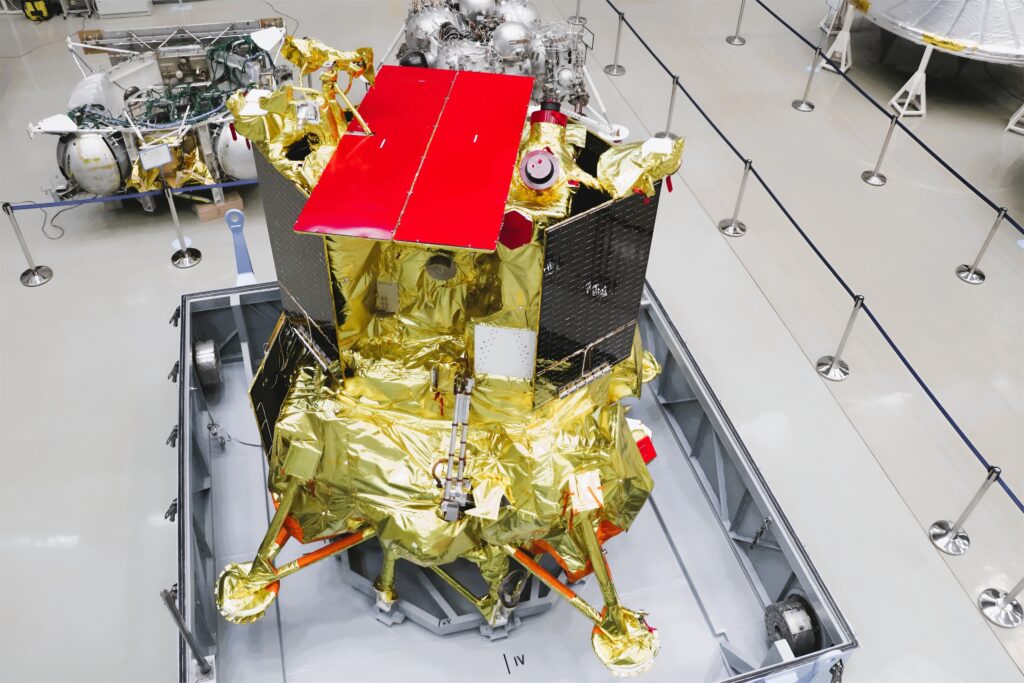Despite many delays, Russia is set to launch its first lunar mission in almost five decades with hopes to participate in the modern-day space race.
The planning of the Luna-25 mission, also known as the Luna-Glob lander, began in 1998 as an attempt to reprise the glory days of the Soviet Luna program.
The mission of its predecessor Luna-24 in 1976 successfully delivered about 170 grams of lunar soil to Earth. Previous Luna missions were launched from the Baikonur Cosmodrome in Kazakhstan. However, the upcoming Luna 25 mission is set to launch from the Vostochny Cosmodrome in Russia.
Vostochny Cosmodrome was built by the Russian government with the aim of establishing an independent spaceport within Russian territory and reduce Russia’s dependence on foreign launch sites.
Amidst heightened tensions arising from Russia’s invasion of Ukraine and unresolved financial obligations, in March 2023, Kazakh authorities took control of assets belonging to the Russian space agency Roscosmos situated at the Baikonur Cosmodrome.
The Luna-25 mission was initially scheduled for August 2022, later delayed to July 2023, and then held up again due to ground control infrastructure tests.
Finally, Roscosmos (Russian Space Corporation) confirmed that the long-awaited Luna-25 launch will take place on August 11, 2023.
“Today, the Soyuz-2.1b space rocket with the Luna-25 automatic station was taken to the launch complex of site 1C of the Vostochny Cosmodrome, ” said Roscosmos in a statement on August 7, 2023.
The Soyuz-2 rocket series vehicle for Luna-25 is aiming to land at the south pole of the Moon. One of the primary objectives is to collect rock samples, with a particular focus on detecting traces of frozen water.
The south pole’s potential ice deposits could provide insight into the Moon’s geological composition and its capacity to support future manned lunar missions.
Additionally, Roscosmos stated that its Luna-25 spacecraft will only take up to five days to travel to the Moon, then spend around five to seven days in lunar orbit before descending to one of three potential landing sites.
If these estimates are correct, the Russian mission could reach the lunar surface around the same time as or even before the Indian Chandrayaan-3 mission, which took off on July 14, 2023.
However, according to Roscosmos, the two missions should not get in each other’s way.
“There is no danger that they interfere with each other or collide. There is enough space for everyone on the Moon,” the Russian Space Corporation stated.
The Luna-25 mission is to be followed by other spacecraft, after which Russia plans to start deploying a full-fledged scientific station on the Moon in collaboration with China.
Yet, NASA is skeptical about Russia’s participation in the modern space race.
“We’ve had a cooperative relationship with Russia ever since 1975 and Apollo-Soyuz,” said NASA Administrator Bill Nelson at an Artemis II mission status briefing on July 8, 2023. “I don’t think that a lot of people at this point would say that Russia is actually ready to land cosmonauts on the Moon in the timeframe that we’re talking about.”
Moreover, due to Russia’s invasion of Ukraine on February 24, 2022, the European Space Agency (ESA) made the decision to terminate its involvement in several joint space projects with Russia, including the provision of the European Pilot-D camera designed for the precise lunar landing of Luna-25.

